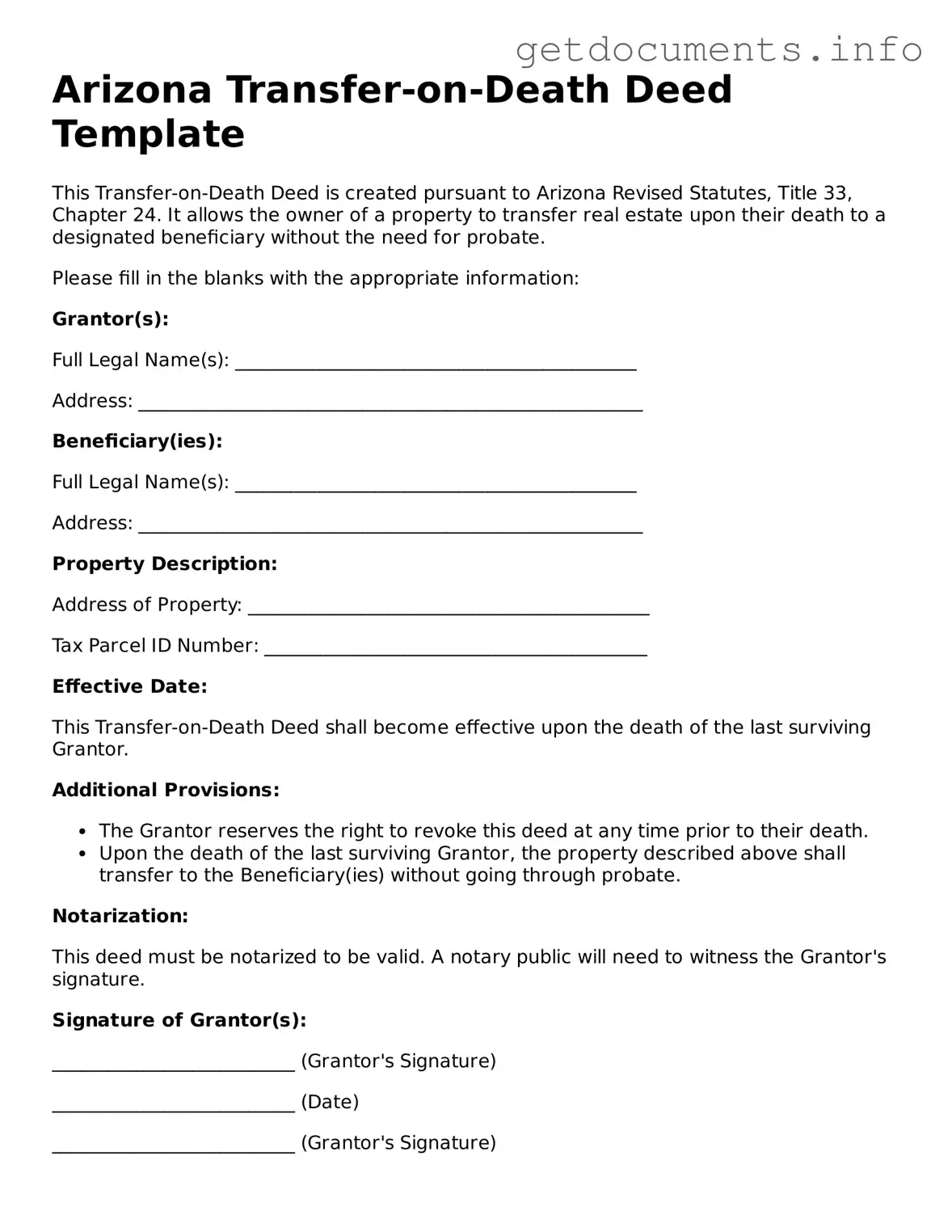Free Transfer-on-Death Deed Template for Arizona
The Arizona Transfer-on-Death Deed is a legal document that allows property owners to transfer their real estate to designated beneficiaries upon their death, avoiding the probate process. This form provides a straightforward way to ensure that your property goes directly to your loved ones, simplifying the transition during a difficult time. If you're ready to secure your estate plan, fill out the form by clicking the button below.
Access Transfer-on-Death Deed Editor
